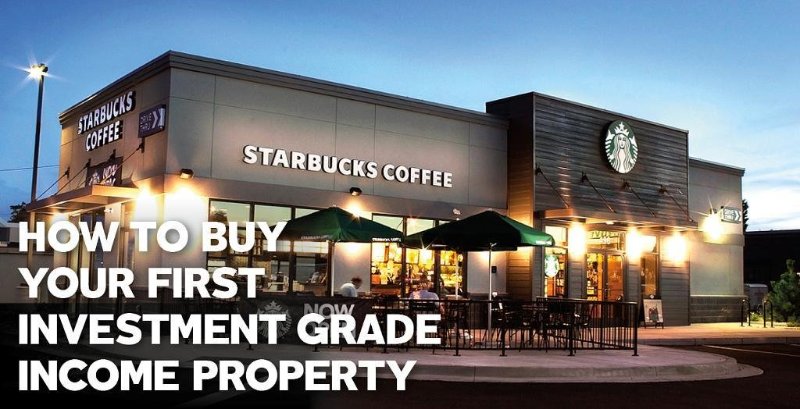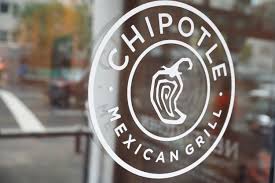The restaurant industry has long been considered a risky venture—a sentiment humorously encapsulated in the 1988 film Midnight Run. In one memorable scene, Charles Grodin’s character, an accountant, bursts the bubble of Robert DeNiro’s bounty hunter, who dreams of opening a coffee shop with his big score.
“A restaurant is a very tricky investment,” Grodin’s character warns. “More than half of them go under within the first six months.”
This iconic line resonates in the business world because, while exaggerated for dramatic effect, it contains a grain of truth. Yet, private equity firms and institutional investors are flocking to the restaurant sector, especially fast-casual dining. Private equity investments in this space surged from $7.7 million in 2013 to $231 million in 2023, according to PitchBook—a nearly 3,000% increase. In 2024, Blackstone underscored this trend by purchasing 1,400 Tropical Smoothie Cafes, betting on the continued growth of fast-casual dining.
But why is this sector attracting billions in capital if, as the accountant in Midnight Run claims, so many restaurants fail? The answer lies in the ability to distinguish fast casual investment grade opportunities from risk-grade ones.
Investment Grade vs. Risk Grade in Fast-Casual Dining
Fast-casual restaurants occupy a unique position in the dining landscape, bridging the gap between the speed of fast food and the quality of full-service dining. They thrive by offering a mix of fresh, customizable, and often healthier options that cater to the needs of health-conscious, convenience-driven consumers. This appeal has fueled their growth over the past decade, attracting significant attention from investors and private equity firms. The model’s adaptability and scalability make it an attractive option for modern diners who demand both quality and efficiency.
However, not all fast-casual brands are created equal. The industry is highly competitive, and success often hinges on factors like brand differentiation, operational efficiency, and the ability to adapt to changing consumer preferences. Chains that prioritize innovation—whether through menu offerings, digital ordering platforms, or sustainability initiatives—tend to outpace competitors. Conversely, those that fail to evolve or overextend themselves risk fading into obscurity or outright failure. For investors, understanding these dynamics is crucial for identifying opportunities with long-term potential.
The trajectory of a fast-casual brand is often a tale of contrasts: winners that dominate their niche and losers that fall victim to market saturation, poor execution, or shifting consumer demands. Investment-grade fast-casual chains demonstrate strong financial backing, credit-worthy real estate strategies, and operational resilience. On the other hand, struggling brands often suffer from inconsistent quality, weak brand loyalty, and unsustainable growth models. For stakeholders and investors, separating the “good grades” from the “bad grades” can mean the difference between a high-performing portfolio and costly missteps.
Good Grades: What Makes a Fast-Casual Restaurant Investment Grade?
Investment-grade fast-casual brands share several common characteristics:
- Strong Brand Recognition: Household names like Chipotle, Panera Bread, and Shake Shack have loyal followings that translate to consistent revenue streams.
- Credit-Worthy Tenants: Brands like Starbucks (rated A- by S&P) and McDonald’s (A) bolster their appeal to real estate investors with strong credit ratings and long-term lease agreements.
- Resilient Business Models: Chains that weather economic downturns, like Chipotle’s recovery from its E. coli crisis, demonstrate adaptability and resilience.
- Operational Scalability: Efficient systems for food preparation, delivery, and digital ordering have enabled brands like Domino’s to dominate in their categories.
- Strategic Real Estate: Investment-grade brands prioritize high-traffic locations and often operate under NNN (triple-net) leases, making them attractive to REITs and institutional investors.
Bad Grades: Why Do Some Fast-Casual Restaurants Fail?
For every success, there are cautionary tales. Before diving into specific failures, let’s revisit the Midnight Run dialogue between the accountant and the bounty hunter. When DeNiro’s character presses for advice on his coffee shop dream, Grodin quips, “You’d have better luck selling matches on the street.” This sequence captures the brutal reality of restaurant closures: for many operators, failure is inevitable.
- Overexpansion: Sweet Tomatoes rapidly expanded during its peak, but the pandemic’s impact on buffet-style dining caused a complete collapse. Locations were shuttered nationwide, leaving landlords scrambling.
- Poor Differentiation: Quiznos once held significant market share, but its inability to compete with Subway and Jersey Mike’s led to widespread closures. By 2023, its footprint had diminished to less than 200 locations.
- Inconsistent Quality: Brands like Boston Market faced quality-control issues that eroded consumer trust, leading to plummeting sales and closures.
- Bankruptcies: High-profile failures like Ruby Tuesday and Friendly’s illustrate how overleveraging and poor financial planning can doom even well-known names.
The Numbers Behind the Failures
Data supports the accountant’s claim from Midnight Run about restaurant closures. While not quite “more than half in six months,” industry statistics reveal:
- Approximately 60% of restaurants close within their first year.
- By the five-year mark, 80% of restaurants fail.
- The fast-casual segment, while faring better, still sees notable attrition rates due to oversaturation and operational missteps.
These figures underscore the importance of identifying truly investment-grade opportunities within the sector.
Private Equity’s Influence: Betting Big on Fast-Casual
Private equity firms have increasingly focused on fast-casual dining as a lucrative growth sector, drawn by the segment’s scalability, resilience, and alignment with shifting consumer preferences. Consolidation has been a hallmark strategy, with firms acquiring proven brands to leverage their operational systems and market positioning. Blackstone’s acquisition of 1,400 Tropical Smoothie Cafe locations in 2024 is a prime example, reflecting confidence in the brand’s ability to scale efficiently while maintaining its appeal to health-conscious, on-the-go consumers. Such acquisitions provide private equity firms with a foothold in a high-growth segment while enabling them to expand these brands further.
Another key strategy is implementing operational overhauls to streamline processes and improve profitability. Many private equity firms introduce technology-driven solutions, such as advanced point-of-sale systems, supply chain optimization tools, and data analytics, to enhance efficiency and drive revenue. For example, Panera Bread leveraged its private equity backing to pioneer digital ordering and delivery, significantly boosting sales and customer retention. These innovations are critical for fast-casual chains to remain competitive in an industry where consumer expectations evolve rapidly.
Real estate arbitrage also plays a significant role in private equity’s interest in fast-casual dining. Many chains operate under triple-net (NNN) lease agreements, which transfer maintenance and property tax responsibilities to the tenant. This structure appeals to institutional investors and REITs because it provides stable, predictable returns. Investment-grade tenants with strong credit ratings, such as Starbucks and Chipotle, further enhance the attractiveness of these assets. However, aggressive cost-cutting measures—often employed by private equity firms to maximize short-term profits—can erode a brand’s quality and long-term viability. Boston Market is a cautionary tale, as Sun Capital Partners’ cost-saving initiatives led to declining customer satisfaction, store closures, and a tarnished reputation, highlighting the risks of prioritizing immediate returns over sustainable growth.
Adaptive Reuse: A Solution for Failed Locations
Fast-casual restaurant closures create opportunities for adaptive reuse, transforming former dining spaces into profitable ventures. These properties, often situated in prime locations, come with built-in infrastructure that can be reimagined for various uses.
Examples of Adaptive Reuse
- Medical and Wellness Clinics: Sweet Tomatoes’ closed locations have been repurposed as urgent care centers, dental offices, and outpatient facilities.
- Ghost Kitchens: The rise of delivery-only models has spurred demand for ghost kitchens, which can operate efficiently in former fast-casual spaces.
- Retail or Co-Working Spaces: High-visibility sites previously occupied by Quiznos or Boston Market have been converted into boutique shops or co-working offices.
Challenges in Adaptive Reuse
While promising, adaptive reuse comes with hurdles:
- Zoning Restrictions: Some properties require rezoning to accommodate new uses.
- Costly Renovations: Adapting restaurant-specific designs for alternative tenants can be expensive.
- Market Saturation: In some areas, an oversupply of failed fast-casual locations limits redevelopment potential.
Grading NNN Tenants in Fast-Casual Real Estate
Real estate investors prioritize tenants with strong credit ratings to mitigate risk. Chains like Starbucks and McDonald’s lead the pack, offering long-term leases and predictable returns. Conversely, weaker brands with limited financial stability pose greater risks.
Investment-Grade Tenants
- Starbucks (A-): A proven performer in the NNN space with global brand equity.
- Panera Bread (Backed by JAB Holdings): Continues to expand while maintaining strong operational metrics.
- Chipotle Mexican Grill: Combines strong brand equity with innovative real estate strategies.
Risk-Grade Tenants
- Ruby Tuesday: Its bankruptcy left landlords with vacant properties and unpaid rents.
- Quiznos: Rapid decline in market share made it a less reliable tenant.
- Emerging Brands: Startups without established credit histories pose greater risks for landlords.
Lessons from the Field: Winners and Losers
Winner: Chipotle Mexican Grill
Chipotle is a beacon of success in the fast-casual sector, thanks to its adaptability and resilience. It navigated the E. coli crisis, embraced digital transformation, and leveraged high-traffic locations under NNN leases to sustain growth.
Loser: Sweet Tomatoes
The buffet chain was once a staple for health-conscious diners, but its closure during the pandemic left a trail of vacant properties. While landlords have found opportunities in adaptive reuse, the brand’s demise highlights the risks of rigid business models.
Conclusion: Navigating the Fast-Casual Landscape
The fast-casual sector exemplifies both the opportunities and risks inherent in restaurant investments. By distinguishing investment-grade brands from risk-grade ones, investors can make informed decisions in a volatile market. Adaptive reuse offers a promising solution for failed locations, turning challenges into opportunities.
Call to Action: For more insights into investment-grade opportunities in the fast-casual sector and beyond, visit InvestmentGrade.com.




